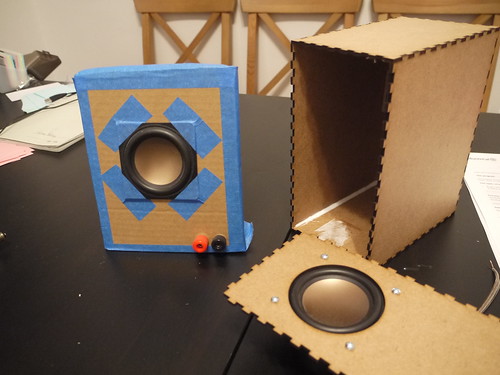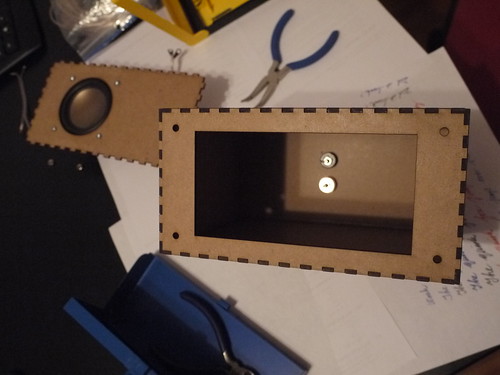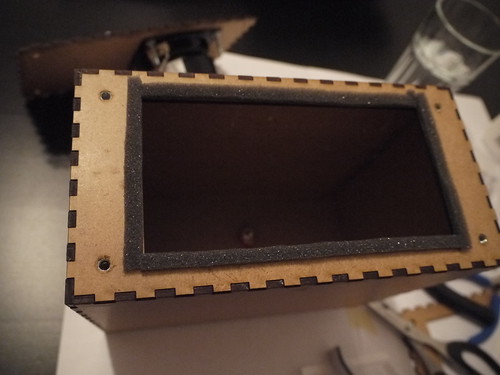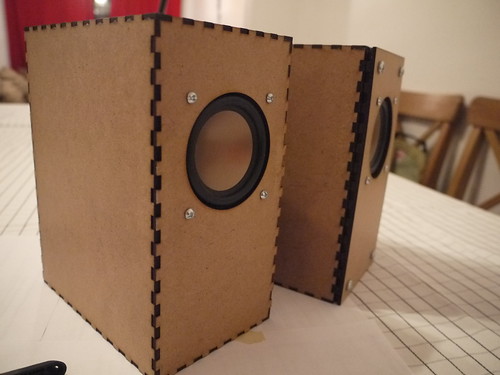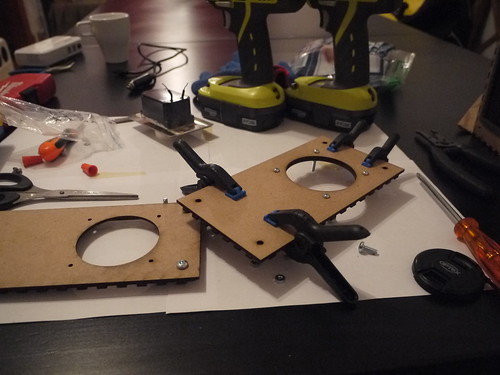As I've got quite a few Raspberry Pi's in employed in various settings, one constant issue is finding the right power source for them. The Pi3, for example, is supposed to require up to 2.5A under heavy use (I presume a lot of wifi activity + fully loaded CPU/GPU, which is probably not likely to happen all the time). However, it's always good to know where the limits lie. I've been running a Model B on a wifi dongle + USB webcam as a streaming home surveillance system for a while now, on a "measly" 1A adapter without any issue (its a Nexus 4 charger, results below explain the quotes around the word "measly"...), which is probably living a bit dangerously perhaps... Anyway, here's some tests I did recently, along with lots of pictures to show for it!
First up, the test equipment. Here I'm testing a Nexus charger (1A), Samsung Tablet charger (2A), a 2.2A supply from Element14, and a cheap "2A" supply from a dealer on AliExpress. Near the top left are the key components for the test, which will be displayed in a larger image following this one:

Here are the interesting pieces of test equipment. On the left is a "USB charge doctor". They're available for a couple bucks on AliExpress. (e.g.
link here.) There are a number of models out there at different prices, but their main feature is to be able to sit between a female USB outlet and a device connected by a male cable, and measures the voltage and current. Another cool feature of this particular one is it also has a resettable energy counter. This basically sums the amount of energy that has gone through, and is good at things like measuring how much capacity is left in your battery, or what the effective output capacity of a mobile power bank is. For example, on our aging Nexus 4, if I deplete the battery completely and charge it (system turned off), it measures about 1600mAh, which is quite a bit below its factory spec of 2100mAh. Our Nexus 5, much used but in newer condition with fewer cycles, reads about 2000mAh (out of 2300 new).

Plugged into the USB power meter, is a funny device with two large green resistors on it. This is a switchable
dummy load that can be set to draw either 1A or 2A from the USB port it is connected to. Using basic Ohms law we can see that the resistors are most likely 5Ohms each, and the 1A mode just makes use of a single resistor (drawing 5V/5Ohms = 1A) while switching to the 2A mode, puts two in parallel (5V/2.5Ohms = 2A). There's also a handy two colour LED that lights up either green in 1A mode or red in 2A mode, assuming the power source doesn't crap out completely (see later tests).
The next funny device is a hacked microUSB female to female USB adapter. This is required in order to use the power meter with the chargers that have microUSB ports hardwired to them. Here are the chargers: Note that two of them are hardwired. I use a 1m Aukey microUSB cable so that they can be used with the same funky adapter (explained later). Aukey, along with UGreen, Anker, and a few other "respected" brands, provide quite high quality products from the AliExpress marketplace at a price that is a compromise between so-cheap-you're-surprised-they-even-work (and most often they don't) and arbitrarily-expensive-north-american-department-store levels.
Below shows the setup for the cellphone chargers. Since
I could simply plug the USB power meter and dummy load directly into the charger (and is in fact what I'd normally do). However, I deliberately introduced the extra USB cable so that I could use my home-made adapter in between. This is because when I was making it, I realized that the wires of the USB extension cable I sacrificed, as well as the traces on the female microUSB adapter board was a bit on the thin side. If the resistance was significant, it may cause a noticeable voltage drop when using this adapter, and would have a negative impact on the observed performance of the charger. This way, any potential degradation would be consistent throughout all our tests. (The flip side of course means that I wouldn't be able to make a very convincing critique of the absolute performance, only how they measure up against each other....)
So then, with a wired charger, this is what the setup looks like:
After that wall of text and pictures, lets finally get down to some results!!
Nexus 4 charger. 1A setting. 4.62V, 0.82A. Note the green light.
Nexus 4 charger, 2A setting. 3.94V, 1.37A. The power meter will probably crap out at some voltage threshold, but here we see its still kicking away, drawing way beyond its rated capacity...
Next we have the Samsung 2A charger. Here we see it at 4.6V, 0.83A for the 1A setting, and 4.53V, 1.65A for the 2A setting.
Onto the 2.2A rated charger from Element14: at 1A, it measures 4.83V at 0.9A
And at 2A, 4.5V and 1.65A
Finally, we have the cheapo 2A charger: even at 1A, the voltage drops down to 3.97V, and outputs a measly 0.7A
And when trying to put a 2.5 Ohm load to draw 2Amps: .... uh oh.
Well, at least the red light gives off a feeble glow, showing that its at least trying. The voltage has dropped so low that the power meter no longer turns on. At some point I could easily verify this threshold on a variable power supply at some point...
Finally, just for fun, I got a 5000mAh Mediasonic Ocho power bank. It has a 1A and 2.1A port.
On the 1A port, I get 4.56V at 0.84A
Trying to draw 2 amps on the 1A port, we get a dropout. However, what you may barely make out in the picture below, is that the voltage is just on the threshold for the power meter to
almost turn on. This suggests that its doing better than the cheap wallwart above!
On the 2A port, we have no trouble at least keeping things going. 4.27V @ 1.56A. Considering that these guys are supposed to at least register a "charging" status on power hungry tablets, its not surprising that it at least manages to chug along, even if the voltage dips quite a bit... for about $10cad from NCIX when on sale, these guys are an amazing deal.
So, there you have it! Here's all the info consolidated in one place:
Charger Rated 1A 2A
Nexus 4 1A 4.62V 0.82A 3.94V 1.37A
Samsung 2A 4.60V 0.83A 4.53V 1.65A
Element14 2.2A 4.83V 0.90A 4.50V 1.65A
Cheap0 2A 3.97V 0.70A N/A
Mediasonic 1A 4.56V 0.84A N/A
Mediasonic 2.1A 4.64V 0.8A 4.27V 1.56A
Comments and final thoughts
The voltages across the board seems a bit on the low side. This is definitely related to the adapter I built. Due to the thin wiring of the cable and small traces, the adapter's resistance will create a.) a voltage drop and b.) reduce the amount of current (Ohms law here we go again...). As mentioned earlier, I wanted to get a sense of the relative performance of these chargers with respective to each other, and if I removed the adapter for the chargers that don't need it, it would skew the results quite a bit against the wired chargers.
I was especially interested in getting some sort of measurement of these wired chargers that I was especially interested in, as prior to the making of this adapter, I had no way at all of testing their performance in any way (other than to see if a Pi manages to boot and/or display the "low voltage rainbow square"). At the same time, I could unquestionably say that the cheap adapter is totally off in terms of rated performance, not even coming close to performing at its advertised values.
For a more definitive view on the absolute performance of these guys, I should probably look into building a microUSB adapter with beefier wiring to reduce the amount of losses through this part. It might also be good to actually compare the performance of the cheap USB power meter with a decent bench meter to see if there are any discrepancies there as well.

















